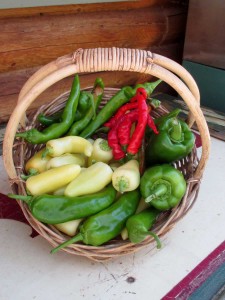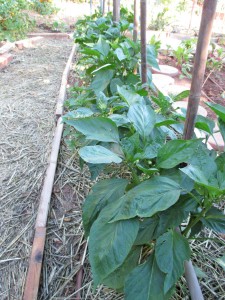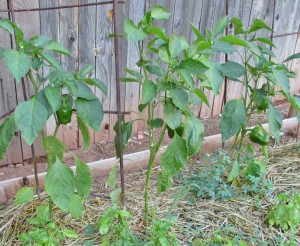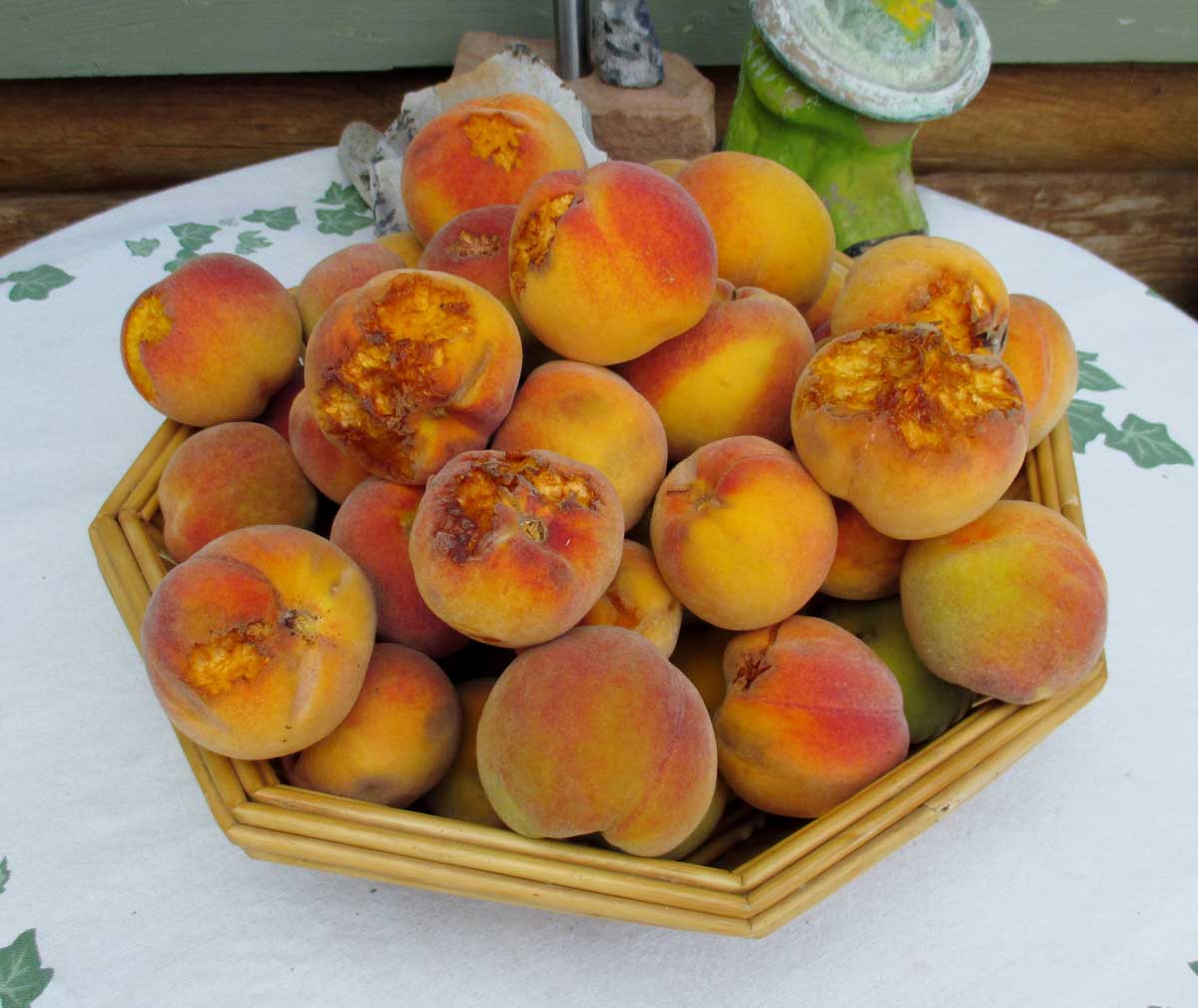In Search of the Perfect Pepper
18 Aug 2014
Peppers are my garden darlings.

- A basket of perfect peppers: ‘California Wonder’ sweet bells, ‘Mariachi’ yellow jalapeno, hot peppers; ‘Biggie Chili’, mild New Mexico; ‘Maules’ red hot pepper

- Thriving ‘California Wonder’ sweet bells love enriched soil, full sun, a bit of support when young and the companionship of ‘Christmas’ basil, said to sweeten the peppers.

- These ‘King Alfred’ sweet bells are in a good soil (note the deeply green leaves), but get too much shade, which has caused the plants to stretch, leading to thinner stalks, less dense foliage and fruit burn.












